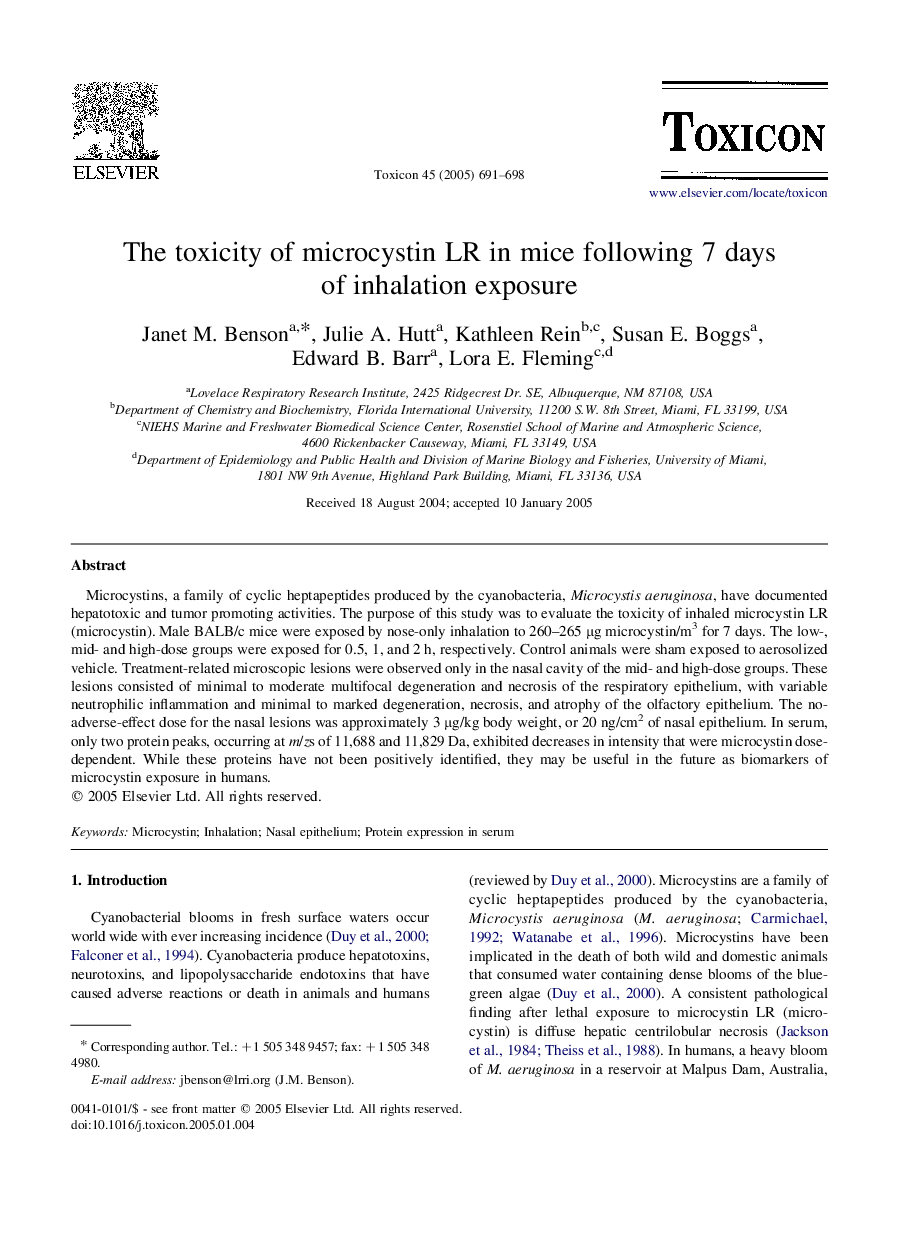| Article ID | Journal | Published Year | Pages | File Type |
|---|---|---|---|---|
| 10880885 | Toxicon | 2005 | 8 Pages |
Abstract
Microcystins, a family of cyclic heptapeptides produced by the cyanobacteria, Microcystis aeruginosa, have documented hepatotoxic and tumor promoting activities. The purpose of this study was to evaluate the toxicity of inhaled microcystin LR (microcystin). Male BALB/c mice were exposed by nose-only inhalation to 260-265 μg microcystin/m3 for 7 days. The low-, mid- and high-dose groups were exposed for 0.5, 1, and 2 h, respectively. Control animals were sham exposed to aerosolized vehicle. Treatment-related microscopic lesions were observed only in the nasal cavity of the mid- and high-dose groups. These lesions consisted of minimal to moderate multifocal degeneration and necrosis of the respiratory epithelium, with variable neutrophilic inflammation and minimal to marked degeneration, necrosis, and atrophy of the olfactory epithelium. The no-adverse-effect dose for the nasal lesions was approximately 3 μg/kg body weight, or 20 ng/cm2 of nasal epithelium. In serum, only two protein peaks, occurring at m/zs of 11,688 and 11,829 Da, exhibited decreases in intensity that were microcystin dose-dependent. While these proteins have not been positively identified, they may be useful in the future as biomarkers of microcystin exposure in humans.
Related Topics
Life Sciences
Biochemistry, Genetics and Molecular Biology
Biochemistry, Genetics and Molecular Biology (General)
Authors
Janet M. Benson, Julie A. Hutt, Kathleen Rein, Susan E. Boggs, Edward B. Barr, Lora E. Fleming,
